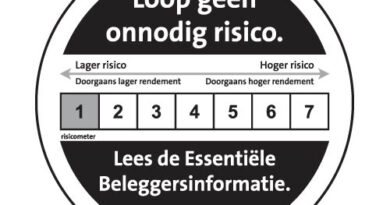The reproduction number R
Despite the misery the COVID-19 crisis is causing, it is also a source for new academic activities. Many research projects related to COVID-19 have popped up. For lecturers, in particular mathematics lecturers like me, it brings new practical examples to our classes, illustrating once again the reason why the theory, in particular the mathematics, we are teaching you is indispensable. Nowadays, even our prime minister Mark Rutte and our minister of public health Hugo de Jonge try to teach us some mathematical lessons. I quote from the last press conference “… although the hospitals seem to have enough room today, next week they can be overcrowded. Yes, dear people, that is the problem with exponential growth. …” and “… we must have R = 0.9 for a long time …”. Written by: Henk Norde
Having mentioned the most famous number today, the reproduction number R, I have to make a confession: I really became a fan of this number. I cannot stop thinking about R. After every potential superspreader event, like the TOP week, the party of Willem II supporters, or the wedding of minister Grapperhaus, I think, “Oops, R will go up.” Every Tuesday I am looking forward to the RIVM-announcement of its newest value (albeit with a delay of two weeks, a pity of course). Every country has its own R: there is a German R, a French R, and a Belgian R, wow. Donald Trump seemed to have claimed that the United States R is already negative. Some say this could be fake news. By the way, I wonder why we have national R’s and no local ones. In my opinion, the Schiermonnikoog R is always 0, whereas the Tilburg R during carnival must have been at least 10.
Obviously, it is clear that R must become smaller than 1. Only then, the number of contagious people is going down to zero in the end. Nevertheless, I think we should try to do more: keep the total number of infections limited. Infected people run the risk to become seriously ill and, if they survive, can suffer from the consequences of this illness for a very long time. Does R = 0.9 reach this goal in the long term? Let us do some simple arithmetic: one contagious person causes R infections in the next period, who in turn infect R2 people in the period afterwards, who infect R3 people afterwards, etcetera. So, this one person causes
1 + R + R2 + R3 + ….
infections in the long run. Ah, here we have the famous power series with which we have bothered you a lot in the first year of the program. Of course, you recall that its sum is equal to 1/(1 – R) if 0 ≤ R < 1 and infinity if R ≥ 1 (see page 129 in the reader Mathematical Analysis 1, version 2019-2020). So, if R = 0.9, then this sum equals 10: every contagious person now causes 9 new infections in the long run. If R = 0.8 we will have 4 new infections in the long run and if R = 0.99 even 99! The current estimation of the number of contagious people is about 130000. So R = 0.9 would lead to 1.3 million infections in total, R = 0.8 to 650000 infections, and R = 0.99 results in nearly the complete population of the Netherlands being infected. What value of R do we strive for? Is the statement “we must have R = 0.9 for a long time” a deliberate one or is it simply the first number smaller than 1 that comes to the mind of our policymakers?
My conclusion is that our Outbreak Management Team definitely needs somebody with a background in econometrics.
Henk Norde is a full professor in Mathematics and Game Theory at Tilburg University. His research interests are cooperative and non-cooperative game theory. He has won our own award for Lecturer of the year seven times!




